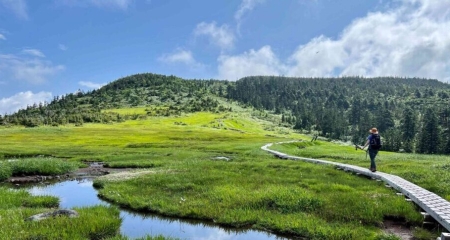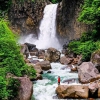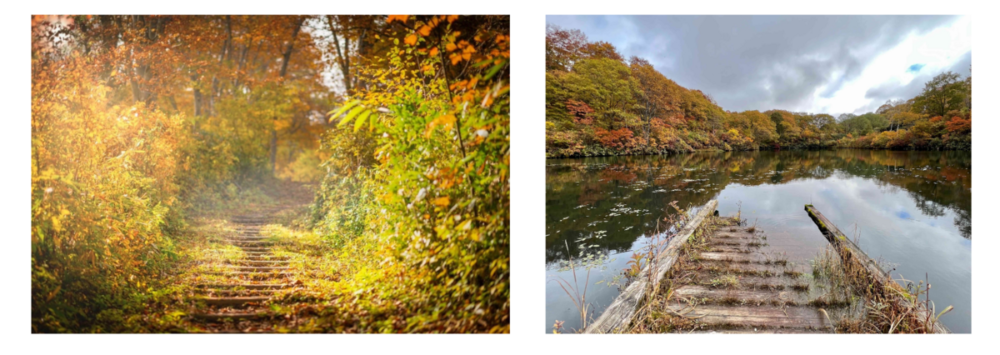
Introduction to the Shin-Etsu trail
Located at the prefectural boundary between Nagano and Niigata prefectures, the Shin-Etsu trail is one of Japan’s premier long ancient roads. It is 110 kilometers long and only 30 kilometers from the Sea of Japan, but it is surrounded by the Sekida Mountain Range, which is about 1,000 meters high, from Mt. Madarao in the west to Mt. Naeba in the east. It is also located in a world class snowy area where the snowfall sometimes exceeds 8 meters in winter, yet it has a beautiful natural landscape and a special historical background.
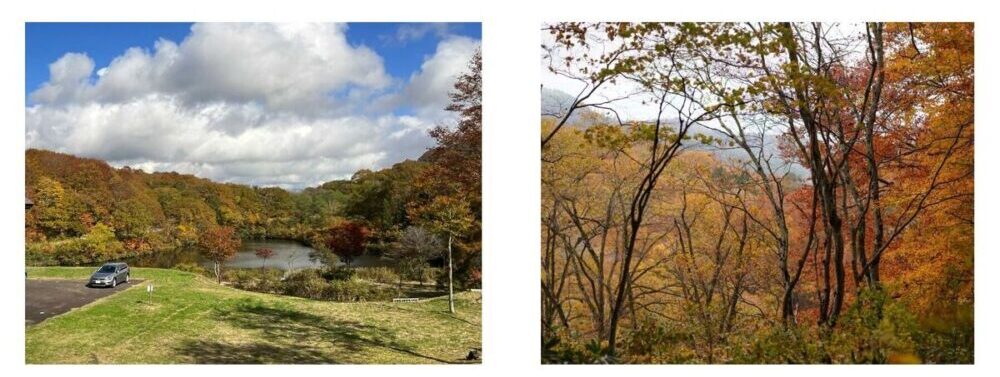
History of the trail
The trail was used by Kenshin Uesugi of Echigo in the Warring States period for the famous “Battle of Kawanakajima” (battled with Shingen Takeda of Kai around 1553 to 1564 CE). However, now, hundreds of years later, the governments and volunteers of Niigata and Nagano prefectures, where the trail crosses, have been working together for the sake of the trail, and in 2004 CE the Shin-Etsu Trail Club, a non-profit organization, was established to develop the trail, maintain the forest, and provide environmental education. In order to preserve the natural environment and ecology of the trail, the staffs do not use machinery, materials from outside, or cut down trees as much as possible. The Shin-Etsu trail practices serve as a model for trails developed since.

Features of the trail
The trail goes over the mountains. From Mt. Madarao in the west, through Mt. Kenashi, Mt. Kuroiwa, Mt. Nabekura, and Mt. Amamizu, to Mt. Naeba in the east, with many beautiful forests, lakes, and wetlands along the way. Similar to the famous Pacific Crest Trail in the United States, the trail passes through several villages and there are many camping sites near it. The Shin-Etsu Trail Club has divided the trail into 10 sections and has assessed the physical and technical demends of each one, so visitors can easily choose the section which best matches their needs and abilities.

The beauty of the trail
The trail from Akaike to Wakui (Section 2) is the easiest of the 10 sections, with relatively gentle slopes and beautiful scenery of forests, wetlands, lakes, hills, and farm roads. The trail is very well maintained, comfortable to walk on, and the scenery is very beautiful. Especially in autumn, the rich vegetation of the trail, such as beech trees, oak trees, mosses, mushrooms, lovely flowers and plants, as well as the colorful leaves, make the visitors feel like entering the world of Ghibli’s animation, which is super fascinating.

Trail section 10, Mt. Naeba, is the most physically and technically demanding of the 10 sections. Mt. Naeba is a volcano with an elevation of 2,145 meters and is one of the top 100 famous mountains in Japan. There are many special trees and various sizes of rocks on the trail. From 1st to 6th station, the trail is not so difficult, but between 6th to 8th station, the trail becomes steeper and there are several climbing and chain sections. After passing through the 8th station, the view opens up to a vast wetland and thousands of big or small swamps, which are stunningly beautiful. When the fog rises, the whole wetland becomes like a fairyland, and the beautiful chirping of birds makes the visitors feel calm and comfortable, which is very healing. Although it is the most difficult section, it is well worth a visit.
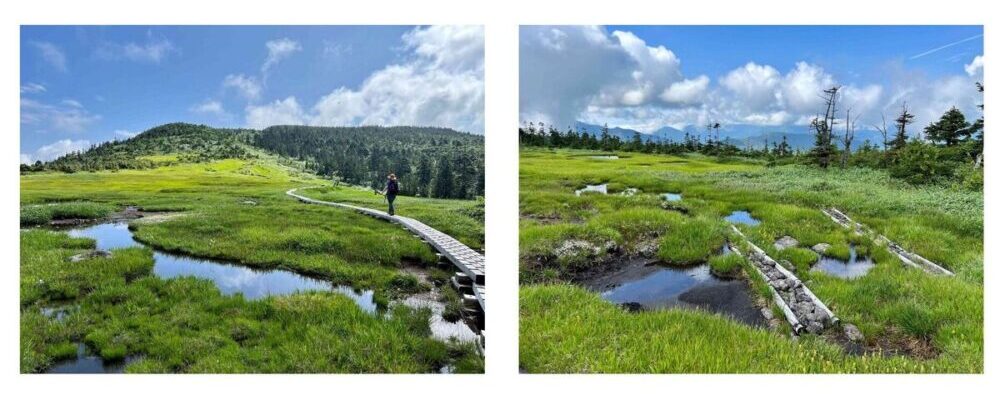
Part of the Legends of the trail
Lake Nozomi at trail section 2 is very beautiful and clear, and there is a small island with a shrine on the side near the parking lot. It is said that in the Warring States period, Lake Nozomi belonged to the Echigo country where Uesugi Kenshin was located. After the “Battle of Kawanakajima (Around 1550s)”, he allowed the water from Lake Nozomi to flow to the Kai country where the enemy Takeda Shingen was located, so that the farmers could use the water from Lake Nozomi to watering their farms, and this story also became a beautiful legend. The later generations of farmers set up this shrine to express their gratitude to Lake Nozomi.
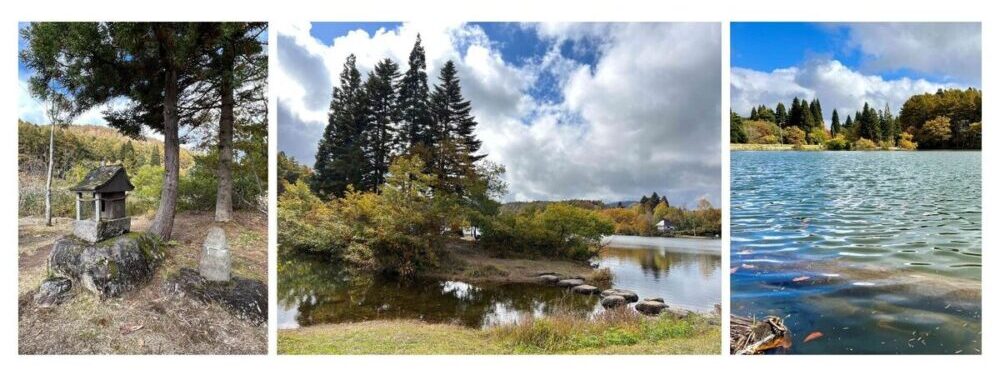
Postscript
The ancient Shin-Etsu Trail is rich in nature and environmental education resources. It’s the result of the joint efforts of the volunteers and government from different prefectures and it also has special history and many legends, so it is definitely worthwhile to enjoy a trip here to nourish your body and soul.
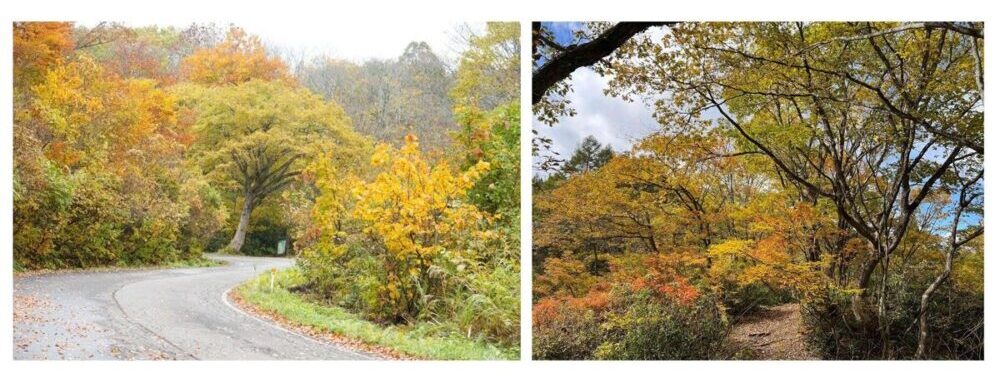
ABOUT THE AUTHOR:
Jing Cheinhui (Jessie) is from Taiwan. She came to Japan in 2020 and moved to Niigata in March of 2022. She loves hiking, driving, and nature. She has explored many amazing places in Niigata and every time falls more and more in love with her new home. She hopes to share the beauty and entertainment that Niigata has to offer!




